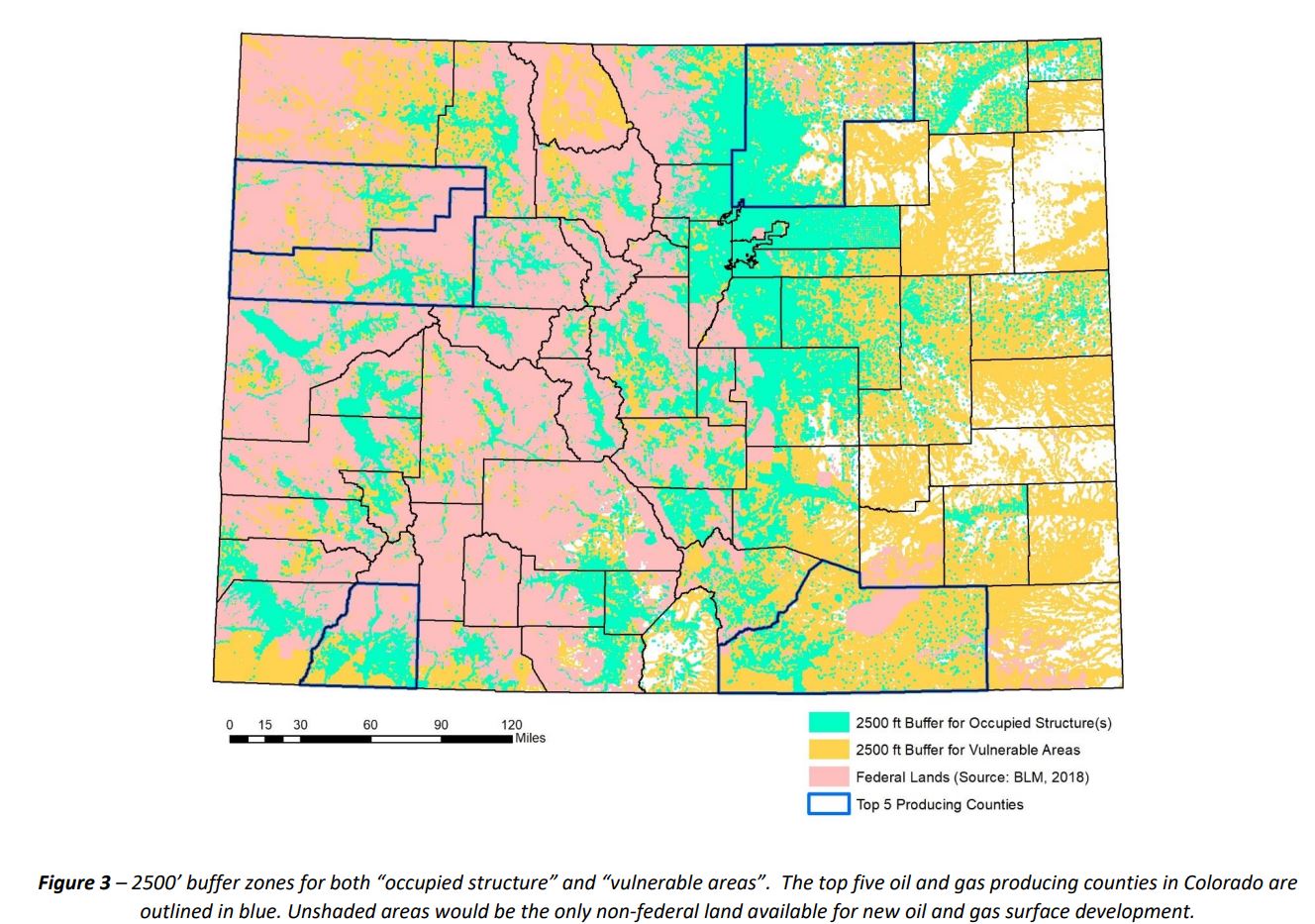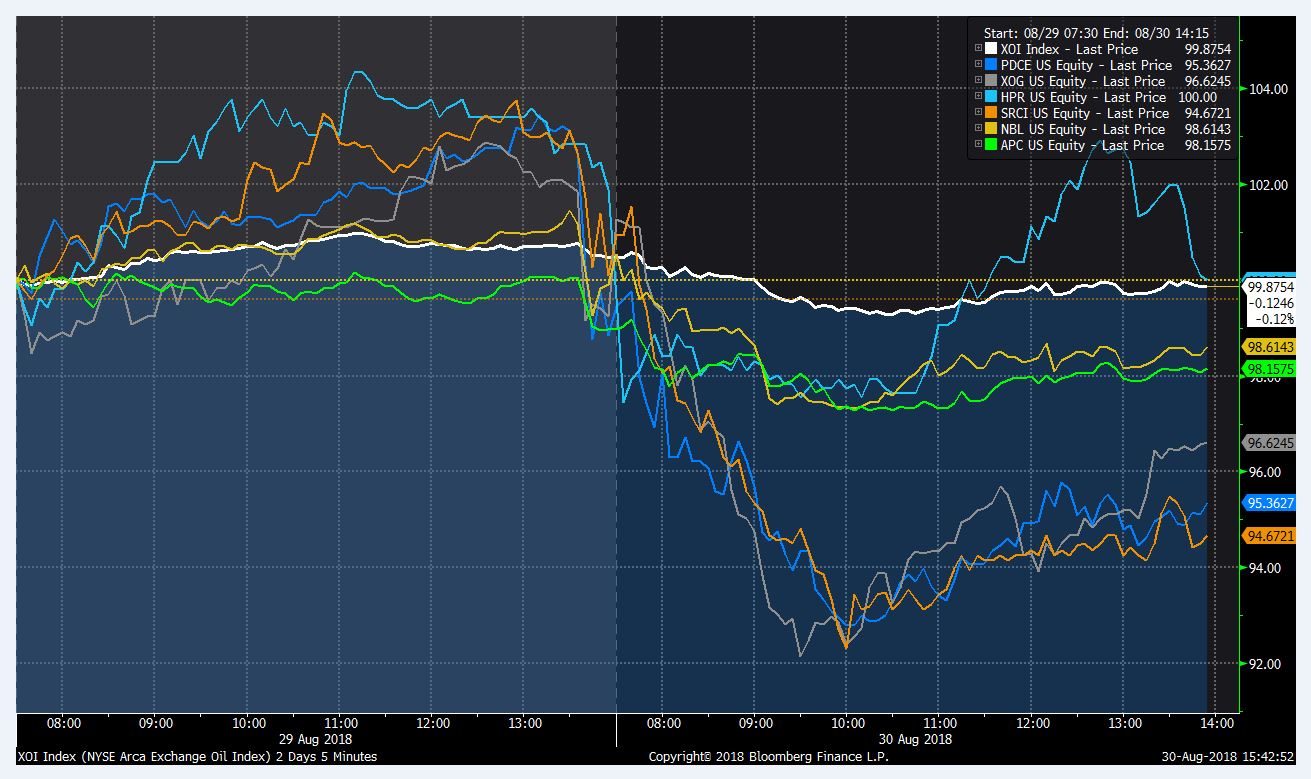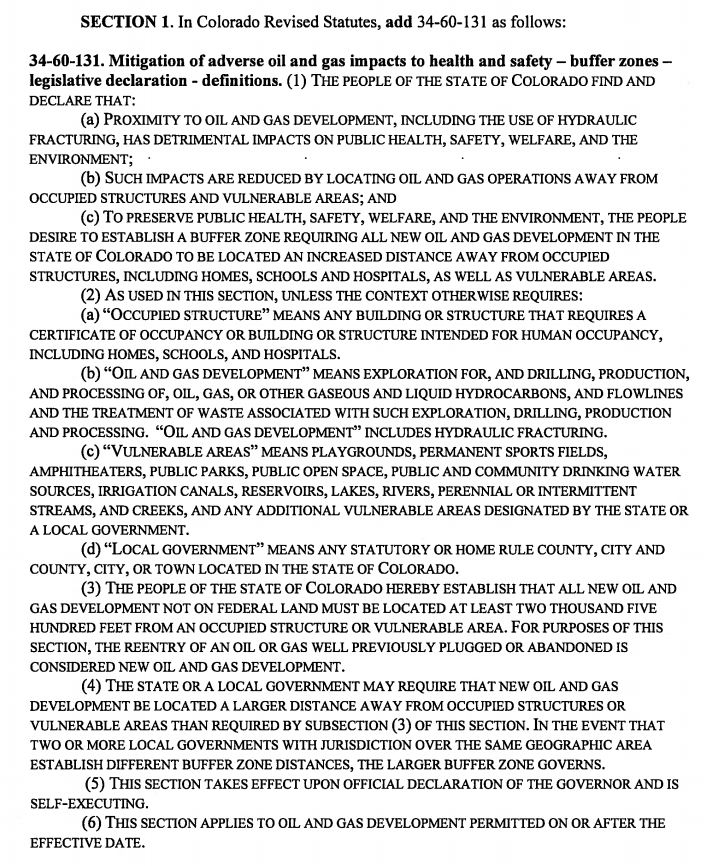It’s a scenario that could possibly send oil and gas reserve values toward $0 and start an exodus of energy companies, capital investment and high paying jobs from the state
From “theoretical to real” in a day
The threat to the oil and gas industry posed by initiative 97 [EDITOR’S NOTE: INITIATIVE 97 WAS RENAMED PROPOSITION 112 ON THE COLORADO BALLOT] went from theoretical to real yesterday when the Colorado Secretary of State confirmed that backers of initiative 97 had turned in enough verified signatures to land the measure onto the Nov. 2018 statewide ballot.
Weld County’s Wattenberg field is dead center in 97’s sights
Companies acquiring and developing oil and gas assets in Colorado’s Wattenberg field have made the Weld County-centered oil and gas field a prolific producer going back almost eight decades. In fact, strong revenues from oil and gas severance and production taxes in Weld created the only county in the United States with no sales tax.
Like other shale basins, the Wattenberg’s drilling activity and its production of oil and gas accelerated markedly during the past dozen years with the advent of hydraulic fracturing and horizontal drilling.
But those very technologies, the combination that created the shale boom and brought wealth, economic security and strong economic growth to many families and businesses in Colorado are at the heart of an effort by environmental groups to stop the extraction of oil and gas in the state. And initiative 97 is the vehicle that may do just that.
What 97 says
The language in initiative 97 asks voters to affirm a change to state statute in the name of public health, safety, welfare and the environment. But what it doesn’t reference at all is that the effect of the measure would be to put an end to oil and gas development in Colorado altogether, sending the economic health of thousands of Coloradoans and the state itself into a tailspin.
What 97 does
Initiative 97 goes around the traditional lawmaking and rulemaking processes.
With no legislature involved in making a new law, no committee hearings, no witness testimonies, no experts, no public comment period, and no back and forth haggling between opposing members of the various bodies of elected representatives, the backers of 97 have successfully put a significant new rulemaking into the hands of individuals. Whichever Colorado voters who go to the polls on Nov. 6. will be able to make a snap decision, either informed or uninformed, by marking a box that will stop an entire industry in its tracks.
How 97 reads
In the opening sentence 97 tells voters that “the people of the State of Colorado find and declare that proximity to oil and gas development, including the use of hydraulic fracturing, has detrimental impacts on public health, safety, welfare, and the environment” and that “such impacts are reduced by locating oil and gas operations away from occupied structures and vulnerable areas.”
“To preserve public health, safety, welfare, and the environment, the people desire to establish a buffer zone requiring all new oil and gas development in the state of Colorado to be located an increased distance away from occupied structures, including homes, schools and hospitals, as well as vulnerable areas,” the measure reads.
The measure defines “vulnerable areas” as “playgrounds, permanent sports fields, amphitheaters, public parks, public open space, public and community drinking water sources, irrigation canals, reservoirs, lakes, rivers, perennial or intermittent streams, and creeks, and any additional vulnerable areas designated by the state or a local government.”
After a series of definitions (see entire proposition below) the measure states, “The people of the State of Colorado hereby establish that all new oil and gas development not on federal land must be located at least two thousand five hundred feet from an occupied structure or vulnerable area. For purposes of this section, the reentry of an oil or gas well previously plugged or abandoned is considered new oil and gas development.”

The Colorado Oil & Gas Conservation Commission performed a GIS study to understand what lands would be excluded from drilling and development as a result of initiative 97’s statewide requirement for a 2,500-foot minimum setback. The white areas are the only non-federal owned land in the state open to oil and gas development if 97 is passed by voters on Nov. 6, 2018.
If 97 passes, Colorado can say goodbye to at least $1.2 billion in annual tax revenue directly associated with oil and gas production
According to a 2015 University of Colorado Leeds School of Business report detailing the economic impact on Colorado from the oil and gas industry, in 2014 property, income, and severance taxes and public land leases and royalties paid by oil and gas companies operating in Colorado totaled nearly $1.2 billion.
“Even a section [of land] with low-producing wells still would generate over $200 million in royalties alone,” said Neil Ray, president of CAMRO, the Colorado Alliance of Mineral and Royalty Owners, in a statement to members on June 12 of this year. “Our cities, counties, and state simply cannot afford to compensate mineral owners for their property.
“If governments prevent mineral owners from developing our minerals, we will be forced to seek just compensation for their value,” said Kathy Allen, a mineral owner who owns minerals in Weld, Yuma, and Montezuma Counties.
Stock market reacts to 97
Stocks of companies with significant oil and gas operations in Colorado were mostly up during morning and midday trading yesterday, but dove after the Secretary of State’s announcement that 97 had made the ballot, late yesterday afternoon.

Chart shows select stock prices over two days — Aug. 29 and 30, 2018. The Arca Oil Index (white line) benchmarks the full industry. The colored lines represent stock price change from the open Aug. 29 through market close on Aug. 30 for oil and gas companies with significant operations in Colorado: PDC Energy (PDCE), Extraction Oil & Gas (XOG), HighPoint Resources (HPR), SRC Energy (SRCI), Noble Energy (NBL) and Anadarko Petroleum (APC). See legend top right.
Additional Oil & Gas 360 coverage of initiative 97 is here.



